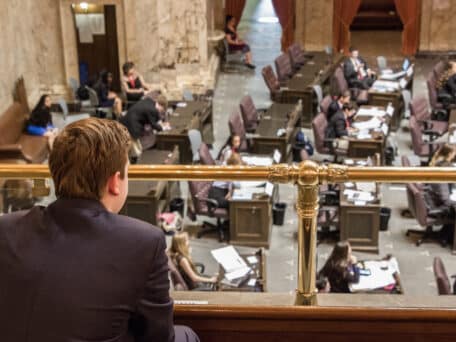SHIFT Guest Opinion – Common Sense from Seattle
If there was ever a policy idea that is popular with Washington voters it is making sure that tax increases require a bi-partisan vote. As noted conservative Susan Sarandon said in the movie Bull Durham, “You can look it up”.
Five times over the last 20 years voters have passed a measure that would require a two-thirds vote in the legislature to raise taxes. In fact, less than two years aso, the two-thirds tax limitation initiative, I-1185, was the most popular item on the 2012 general election ballot. It passed by 64%, and received more votes than any other ballot measure or any candidate, including President Obama.
Yet, for some reason known only to them, Democrats always work to get rid of this bi-partisan measure. Four times the Democrats used their control of the legislature to repeal it. Then, perhaps thinking people were starting to notice that the Democrats were always ignoring the will of the voters, they asked their friends to use the court system to stop what they could not. Liberal groups filed a lawsuit against the 2012 ballot measure and convinced the friends they had elected to the State Supreme Court to quietly overturn the measure early last year
In response, Republicans proposed giving the voters the chance to put the two-thirds reuirement into the state constitution, so it couldn’t be repealed by Democrat legislators or struck down by the courts. Sadly, the constitutional amendment was defeated earlier this sweek in the state Senate by – you guessed it – every singler member of the Democrat causcus voting against the people’s will.
Let’s repeat – some 21 Democrat Senators just voted against a popular policy that had passed overwhelmingly in 17 of their districts. And a couple other ones – Senators Hobbs and Fockt – skipped the vote.
The risk for liberal lawmakers is their constituents might find out. Here’s a list of districts showing how people voted on the 2012 two-thirds tax limitation initiative, compared with how their own Democratic Senator voted on the same idea.
Two-Third Tax Limitation Requirement
| Popular Vote by District | Senate Democrat’s Vote | ||
| District | Vote % | Senator | Vote |
| 1 | Yes (64%) | Rosemary McAuliffe | No |
| 3 | Yes (66%) | Andy Billig | No |
| 5 | Yes (68%) | Mark Mullett | No |
| 11 | Yes (62%) | Bob Hasegawa | No |
| 19 | Yes (70%) | Brian Hatfield | No |
| 21 | Yes (63%) | Marko Liias | No |
| 22 | Yes (54%) | Karen Fraser | No |
| 23 | Yes (60%) | Christine Rolfes | No |
| 24 | Yes (66%) | Jim Hargrove | No |
| 27 | Yes (60%) | Jeannie Darneille | No |
| 29 | Yes (68%) | Steve Conway | No |
| 30 | Yes (69%) | Tracey Eide | No |
| 32 | Yes (61%) | Maralyn Chase | No |
| 33 | Yes (64%) | Karen Keiser | No |
| 38 | Yes (67%) | John McCoy | No |
| 40 | Yes (55%) | Kevin Ranker | No |
| 49 | Yes (67%) | Annette Cleveland | No |
Why do Democrats vote against a bi-partisan tax-limitation policy people in their own districts so obviously want? Their vote is obviously driven by political greed. Democrats require higher taxes to generate the money needed to feed the liberal special interest groups that benefit from government spending – and then provide Democrat elected officials with the majority of their campaign contributions. Given their record, it’s safe to say Democrats will continue fighting for tax increases, at least as long as they think they can keep getting away with it.



